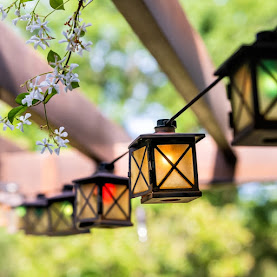It's time to put beautiful flowers on your porch or in your yard. Read what are the mistakes most people make when caring for plants in spring, and how to avoid them.
We are in the season of nature's rebirth. In spring, caring for plants is essential if we want to continue enjoying them.
However, certain mistakes can harm our plants and prevent them from growing properly. Below you will find the most common of them, as well as how you can avoid them.
Pruning
is extremely important, but if done incorrectly, our plants can suffer. We will need to be careful not to remove new shoots and not to prune too deeply on plants that are sensitive, such as roses, so as not to reduce their flowering. As for deciduous trees and shrubs, we make sure to prune them before the next growth period begins.
It is important to use clean tools for pruning, so as not to transfer diseases. Also, the cuts must be clean so as not to hurt the plants.
Fertilizer is essential as plants "wake up" from winter. However, care must be taken because excessive fertilization will have the opposite of the desired results, such as possible burns, excessive amounts of nutrients or even plant losses. The best time to fertilize is in early spring, when plants begin their new growth. Organic fertilizers or compost are better choices, as they gradually enrich the soil with nutrients.
Watering
As the weather is not yet very hot and there is rain, we need to monitor the plants' watering needs. Excessive watering will create problems for the roots, while lack of water can dehydrate them. It is important to adjust watering according to the temperatures and needs of each plant.
Pests
Plants are vulnerable to attacks in spring, especially by spider mites, aphids or caterpillars, so we observe their leaves and shoots. Yellowish spots on the leaves and wilted or eaten leaves can be a sign of an attack. To combat it, it is good to seek advice from an expert and prefer natural methods (e.g. beneficial insects).
Adapting Plants to Another Location
During the winter, many plants may have been placed in sheltered locations or indoors. Moving them outdoors needs to be done gradually so that they are not suddenly exposed to sunlight, wind or low temperatures. The shock that will be caused will create problems.
We are in the season of nature's rebirth. In spring, caring for plants is essential if we want to continue enjoying them.
However, certain mistakes can harm our plants and prevent them from growing properly. Below you will find the most common of them, as well as how you can avoid them.
Pruning
is extremely important, but if done incorrectly, our plants can suffer. We will need to be careful not to remove new shoots and not to prune too deeply on plants that are sensitive, such as roses, so as not to reduce their flowering. As for deciduous trees and shrubs, we make sure to prune them before the next growth period begins.
It is important to use clean tools for pruning, so as not to transfer diseases. Also, the cuts must be clean so as not to hurt the plants.
Fertilizer is essential as plants "wake up" from winter. However, care must be taken because excessive fertilization will have the opposite of the desired results, such as possible burns, excessive amounts of nutrients or even plant losses. The best time to fertilize is in early spring, when plants begin their new growth. Organic fertilizers or compost are better choices, as they gradually enrich the soil with nutrients.
Watering
As the weather is not yet very hot and there is rain, we need to monitor the plants' watering needs. Excessive watering will create problems for the roots, while lack of water can dehydrate them. It is important to adjust watering according to the temperatures and needs of each plant.
Pests
Plants are vulnerable to attacks in spring, especially by spider mites, aphids or caterpillars, so we observe their leaves and shoots. Yellowish spots on the leaves and wilted or eaten leaves can be a sign of an attack. To combat it, it is good to seek advice from an expert and prefer natural methods (e.g. beneficial insects).
Adapting Plants to Another Location
During the winter, many plants may have been placed in sheltered locations or indoors. Moving them outdoors needs to be done gradually so that they are not suddenly exposed to sunlight, wind or low temperatures. The shock that will be caused will create problems.
More tips
Natural fertilizing or pest control products are friendlier to us, our pets and the environment.






















.jpeg)


0 Comments